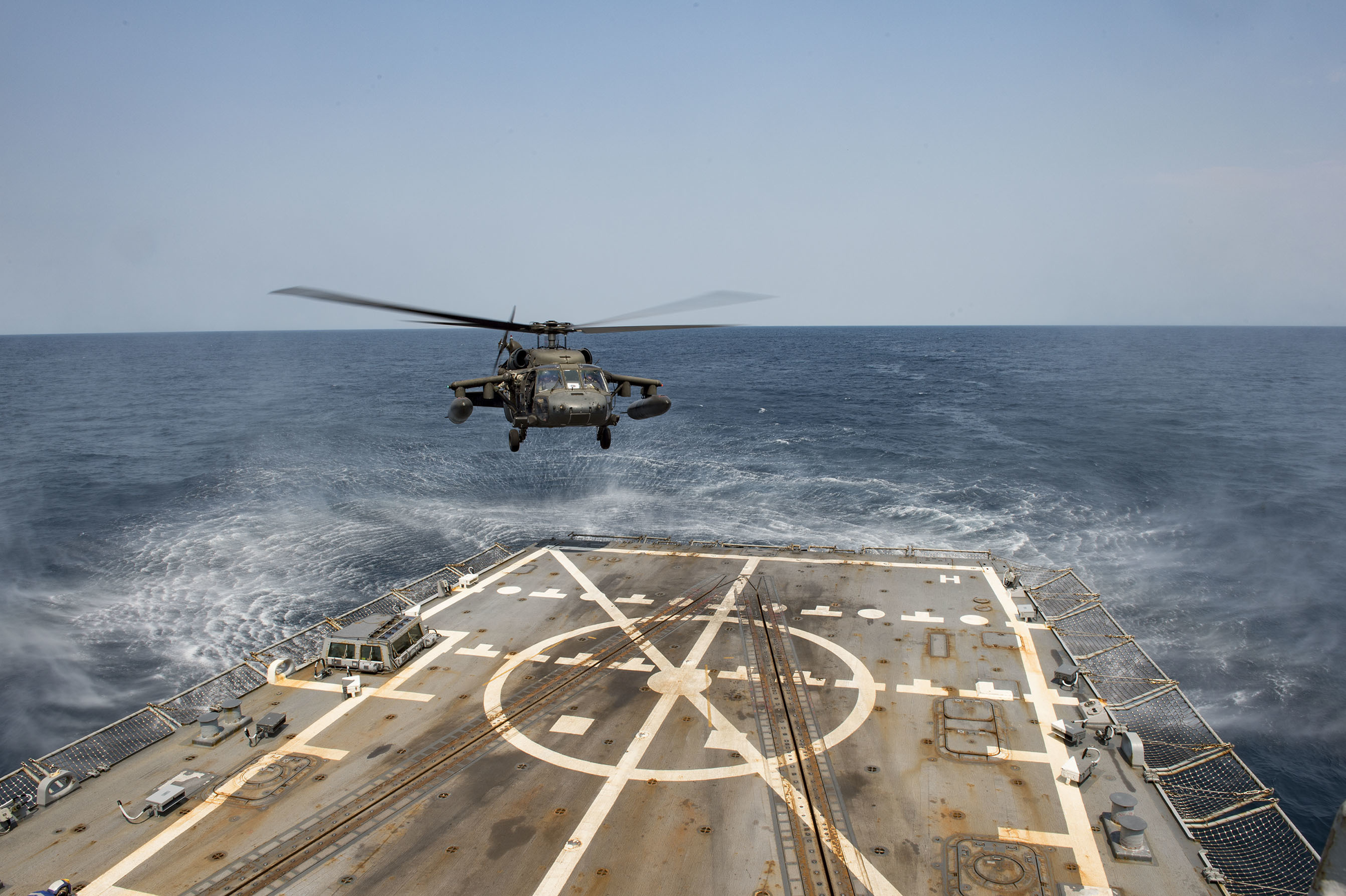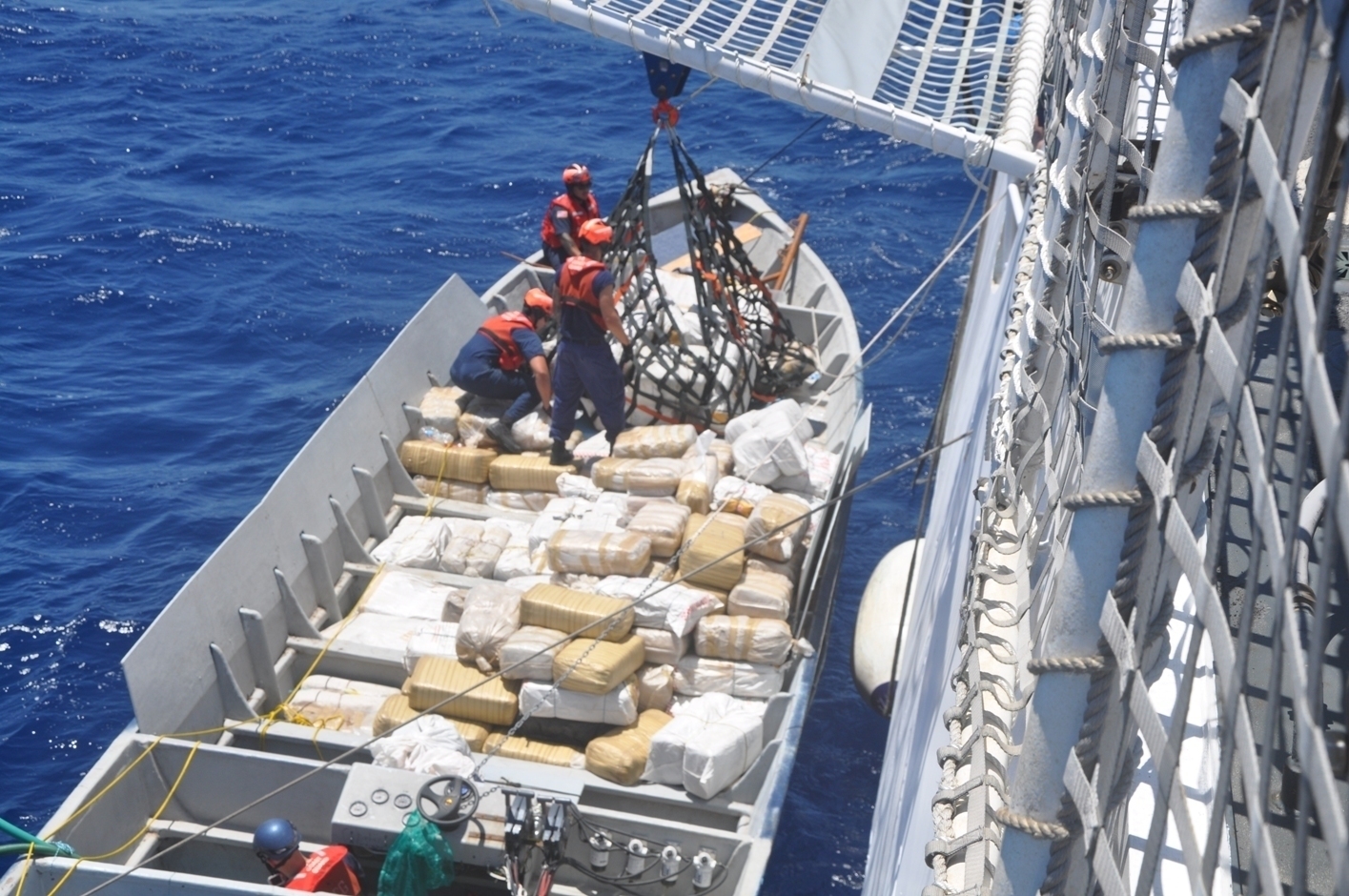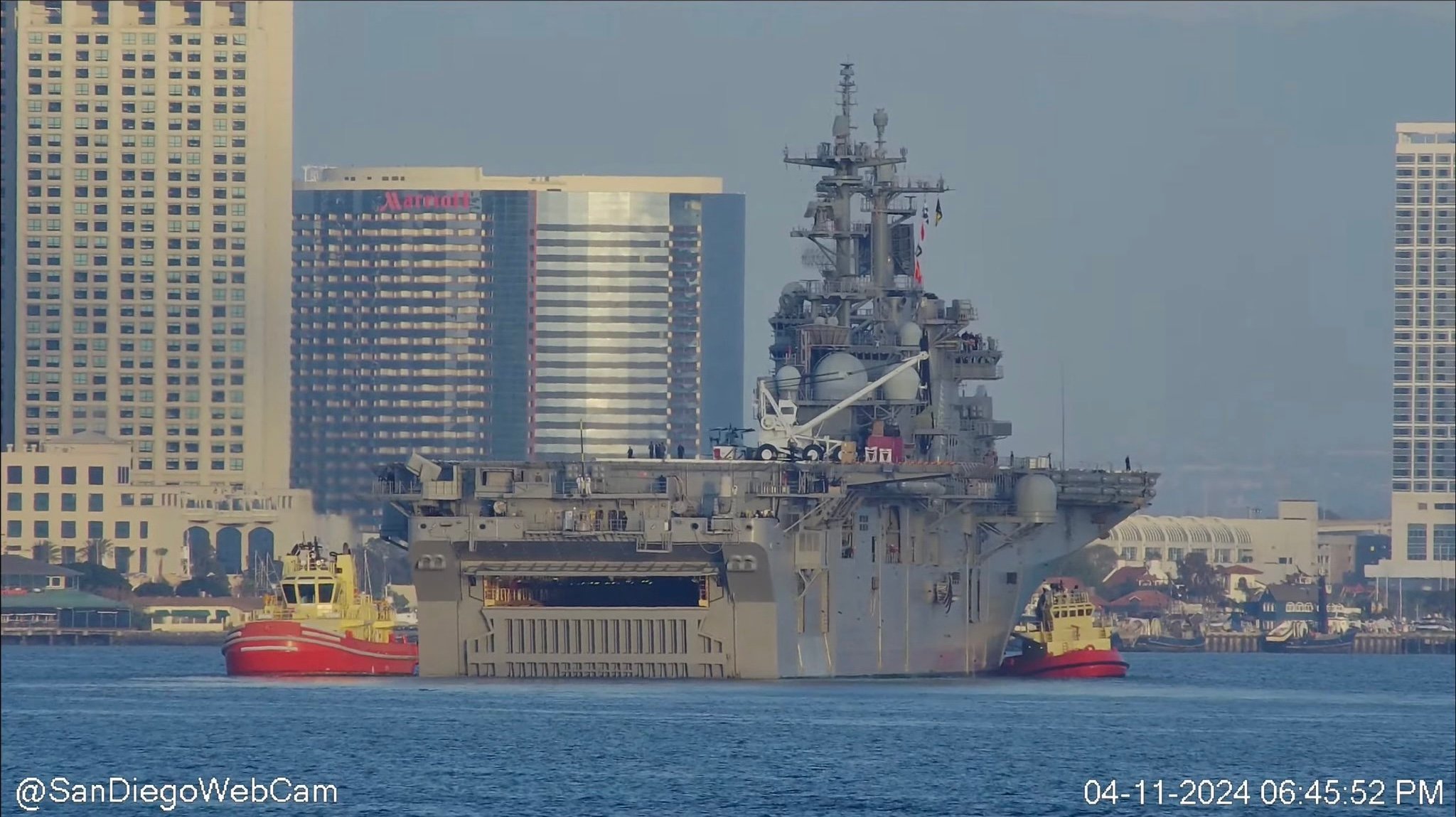
U.S. Southern Command wants to be a hub for innovation, both in serving as an early tester for new technologies and ideas that can be brought into theater and also in seeking creative ways to get more ships into theater to train with regional partners.
SOUTHCOM Commander Adm. Kurt Tidd said today at an event co-hosted by the Center for Strategic and International Studies and the U.S. Naval Institute that his theater has changed drastically from the days when leadership focused primarily on interrupting the narcotics trade and could do so primarily with frigates and maritime patrol aircraft. Instead, the threat set has grown increasingly complex – networks are engaged in moving illicit goods, trafficking both criminals and refugees, laundering money and more – and ships and planes at SOUTHCOM’s disposal are all but gone, due to both the retirement of the frigate fleet and more urgent needs for ships in the Pacific and Middle East.
Tidd said he doesn’t need a carrier strike group to counter this more complex threat – and he noted that he wouldn’t get one if he asked for a CSG – but he does need ships to go on presence missions, to train with regional partners and to help search for sophisticated semi- and fully submersible vehicles now used to move people and drugs into the United States.
The admiral noted that ships transit through SOUTHCOM’s area of responsibility regularly while moving between the East and West coasts, and he said the Defense Department ought to be able to figure out how to leverage that temporary presence.
“While en route, why not stop for up to a week in order to conduct port visits, bilateral exchanges and short-duration exercises?” he said.
“If we could bring this kind of thinking into the future concept design for ship transits, we could provide low-cost training opportunities and visible, consistent U.S. Navy presence in a part of the world where it has been in far too short supply lately.”
Aircraft carrier USS George Washington (CVN-73) made several stops through SOUTHCOM while transiting from San Diego, Calif., to Norfolk, Va., during the three-carrier swap last year. The ship took its time coming down the West Coast of South America, stopping in Chile and Peru for exercises and partnership-building activities before rounding the Strait of Magellan and exercising in Brazil.
Moreover, Tidd added, why not send newly commissioned ships to SOUTHCOM while the crew is learning the ship and working out the kinks? He specifically mentioned LCSs, which have to go through a crew integration phase, and suggested that instead of staying in U.S. waters and exercising against notional threats they could come to the Caribbean or into Latin America to learn to operate the ship and its mission systems against a real but low-end threat.
Tidd praised the Coast Guard for increasing its presence in SOUTHCOM as the Navy’s presence fell. He said that Commandant of the Coast Guard Adm. Paul Zukunft has promised to maintained a boosted presence of cutters in U.S. 4th Fleet as well as a commensurate plus-up in maritime patrol aircraft to help support the ships.
“This support is especially critical as the Navy decommissions its frigates and P-3 aircraft and awaits the full deployment of its new line of Littoral Combat Ships and its fleet of P-8 Poseidon aircraft,” he said.
“In essence, the Coast Guard is enabling us to meet our Title X statutory obligations and deterring human smuggling. There’s a reason why we in SOUTHCOM refer to the Coast Guard as SOUTHCOM’s navy.”

In addition to maritime forces, Tidd said other components of the U.S. security and law enforcement apparatus and their foreign counterparts would have to work together more closely.
“We’re lifting our sights from an exclusive focus on a single illicit commodity – drugs – and instead we’re challenging ourselves to take a networked view of the environment. That means thinking and acting in multiple domains, embracing cross-functional teams, tearing down stovepipes, developing the staff to embrace complexity and alternative viewpoints, and constantly learning, adapting and applying new approaches and ideas,” Tidd said.
“We need to increase regional maritime cooperation, real-time information sharing and multi-national operations. We need to continue building and reinforcing bonds of trust across and between our own military, law enforcement, diplomatic and intelligence communities, fusing these bonds bilaterally and multilaterally with our key partners. We need to explore innovative technologies that don’t just make us smarter but also better. We need to support more operations like Homeland Security investigation Operation Citadel, which is fast becoming the model for DoD support for countering threat networks in the Western Hemisphere.”
In addition to finding innovative ways to employ assets in SOUTHCOM, Tidd said he wanted to invite others to test out their innovations in the region, saying “we can’t think of an easier place to try things out than to do it down in SOUTHCOM.”
“What we offer is a regional combatant command that has what we believe to be a challenging type of an adversary that we are dealing with, with a meaningful mission that is not an exercise – not an artificial activity, but it is a task that is worth doing,” he said.
“And so my commitment is to, whether it’s the services, whether it’s our research and development organizations, our labs – try it here first. If you’ve got something that maybe is being developed, a capability, a technology, just a tactics, techniques and procedures perhaps for another theater, perhaps a higher-threat theater, and you want to get a little bit of run time and get some valid, meaningful data collection – my commitment and the commitment of U.S. SOUTHCOM headquarters is, we’re close – basically more or less the same time zones – we’re relatively convenient to get to, and I can promise that we will do everything we possibly can to eliminate any bureaucratic barriers that might lie in the way.”





